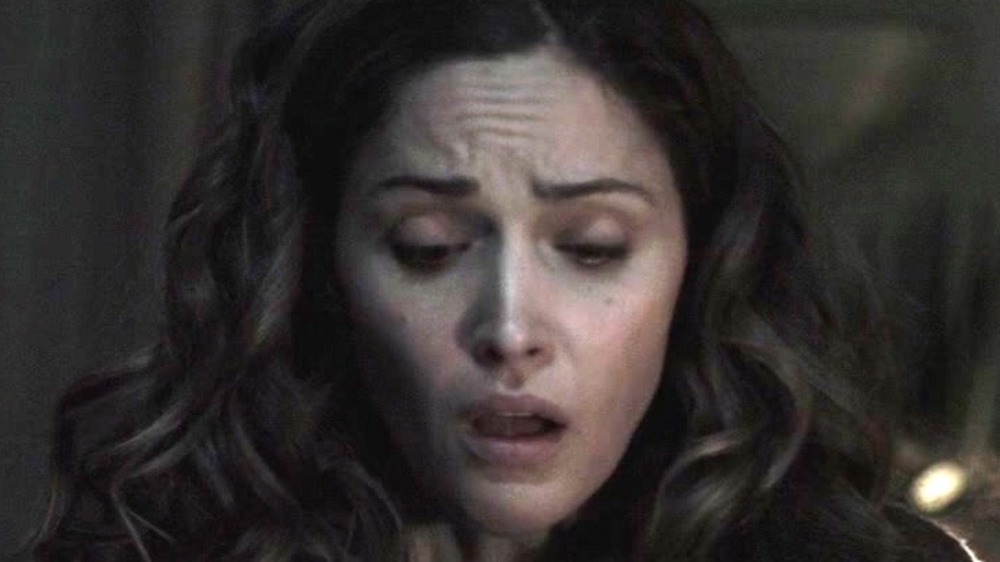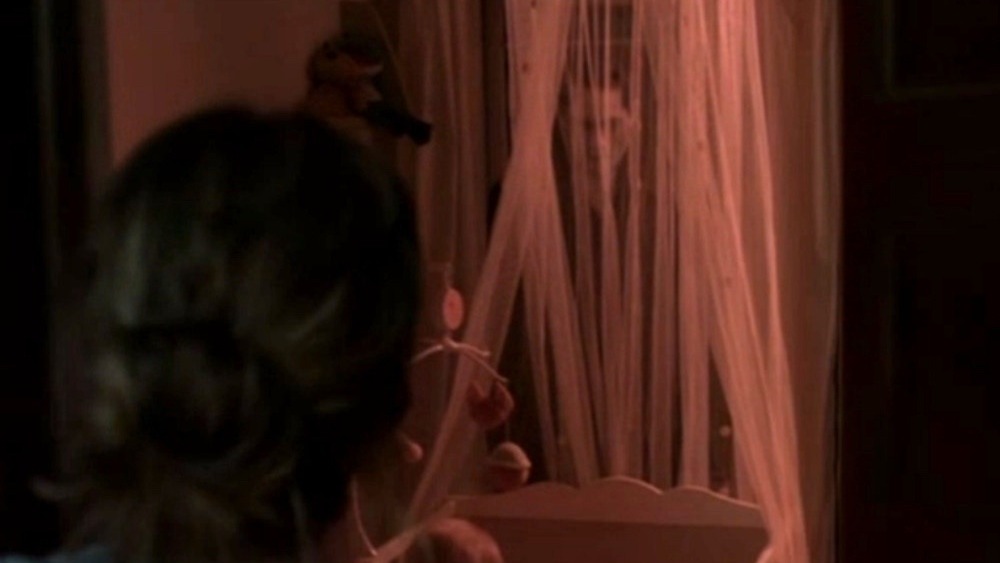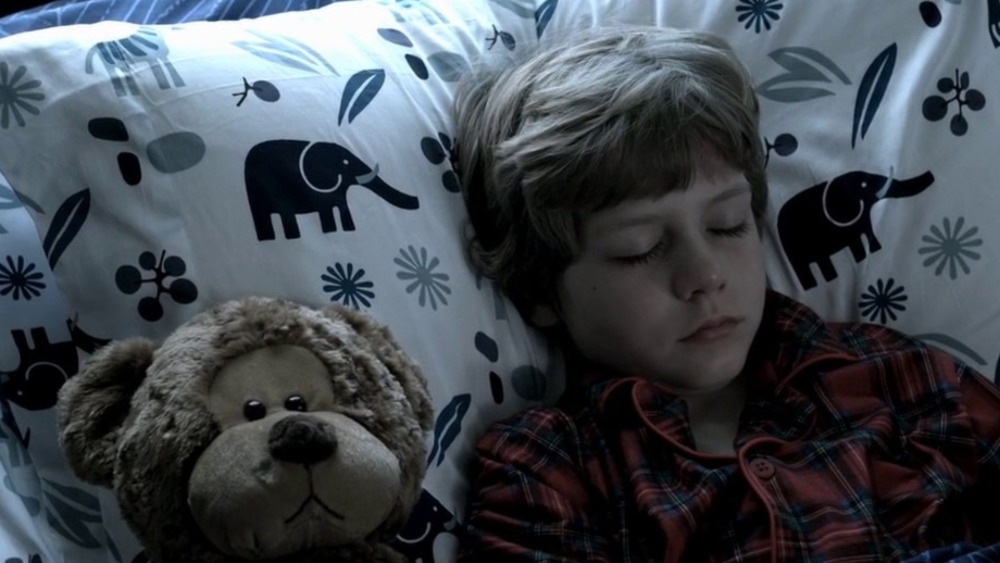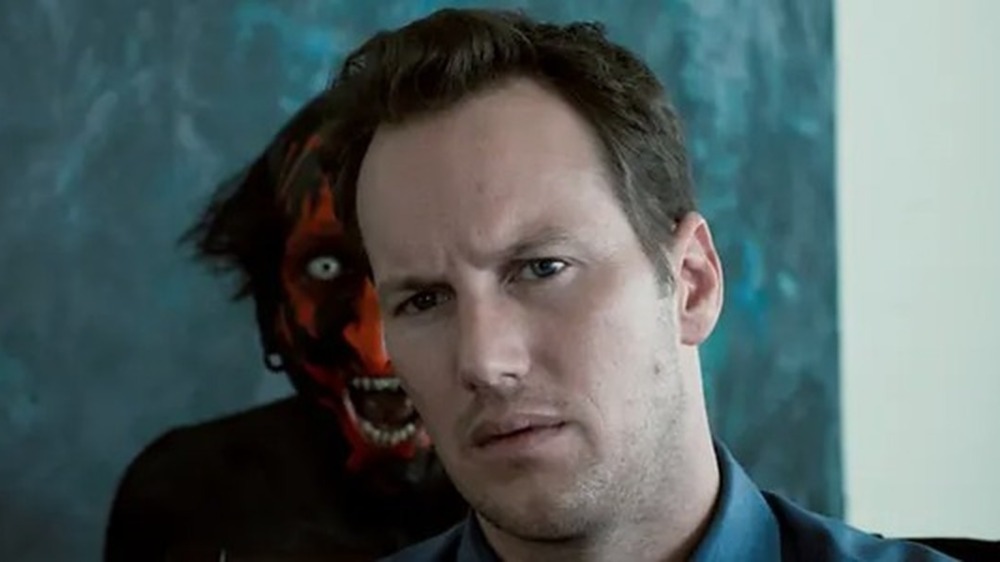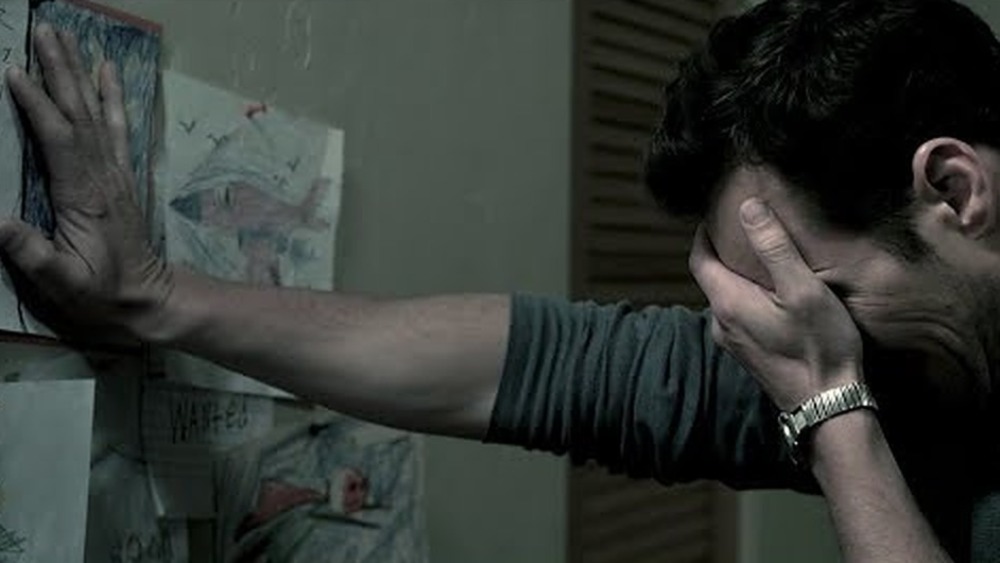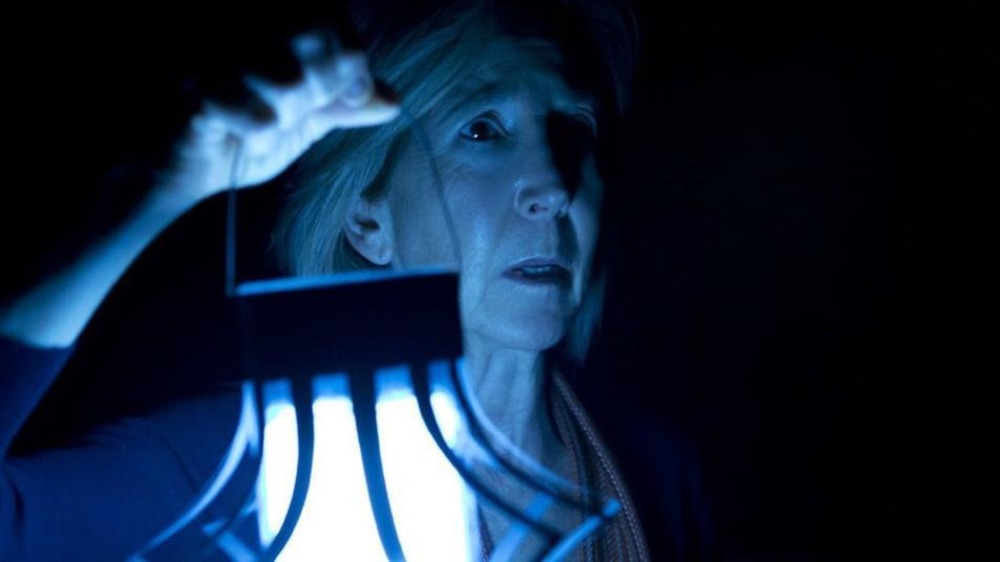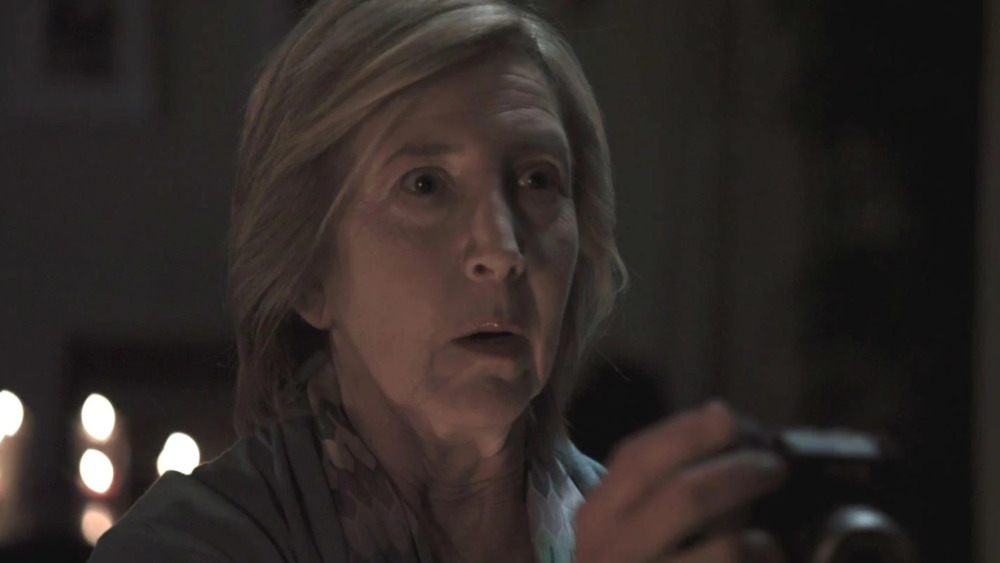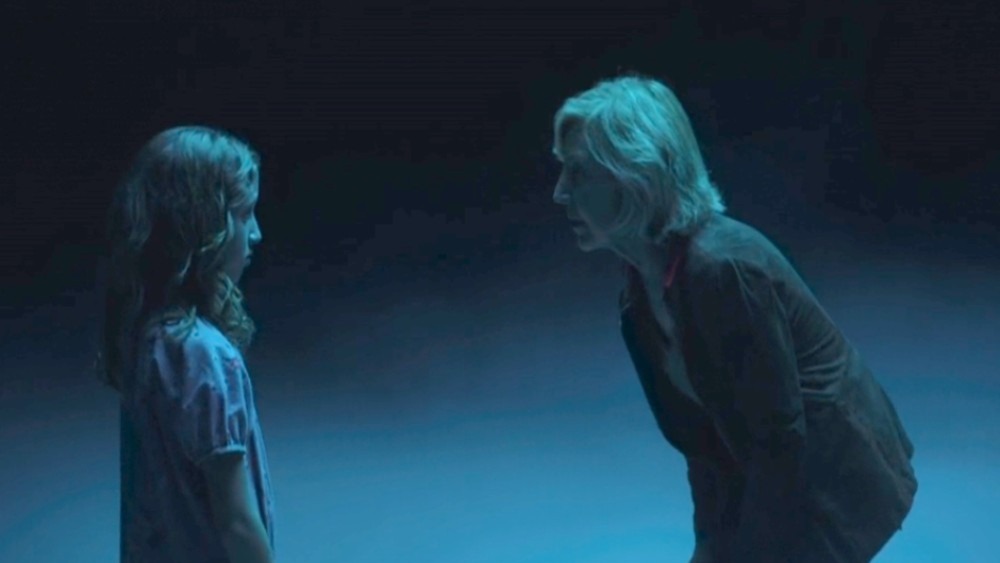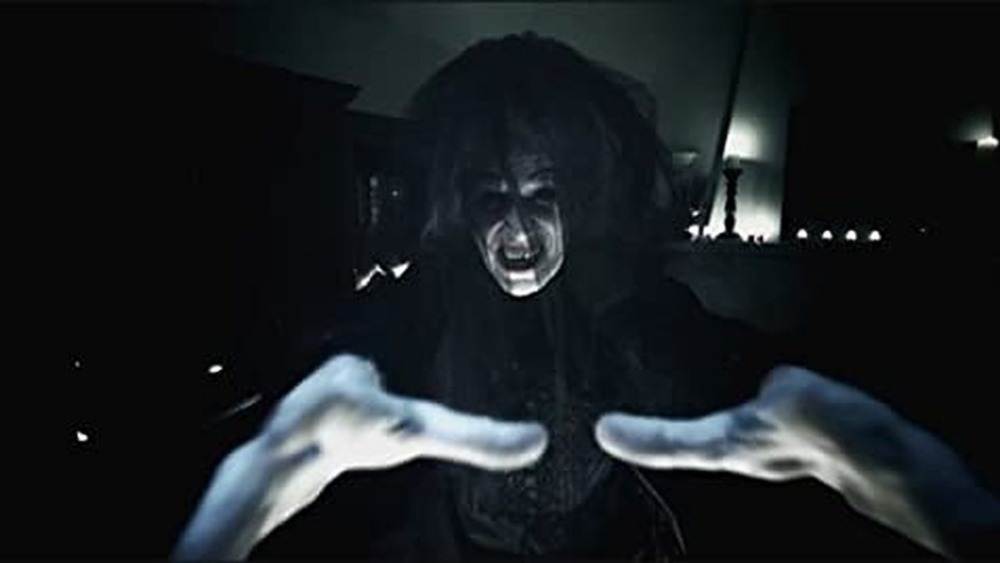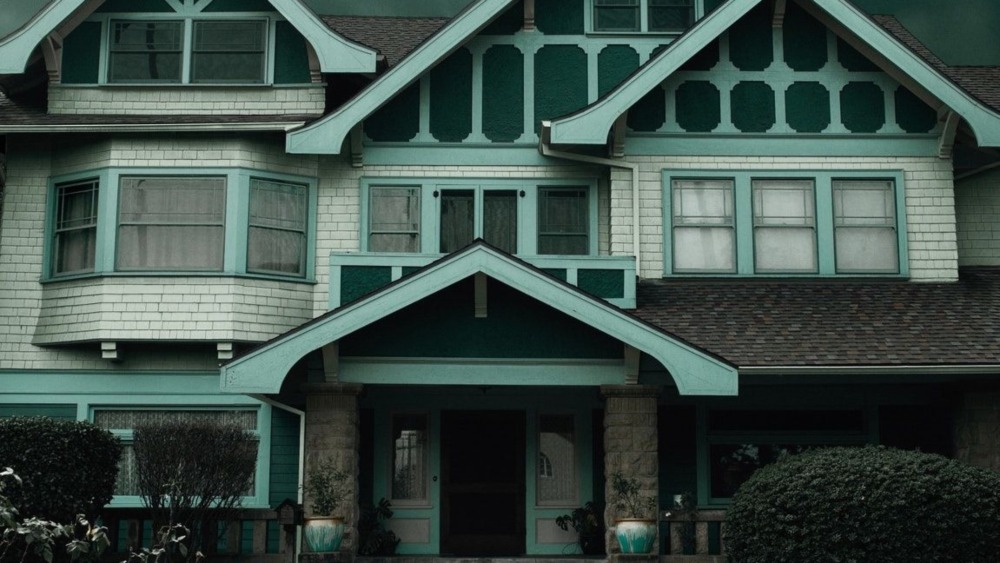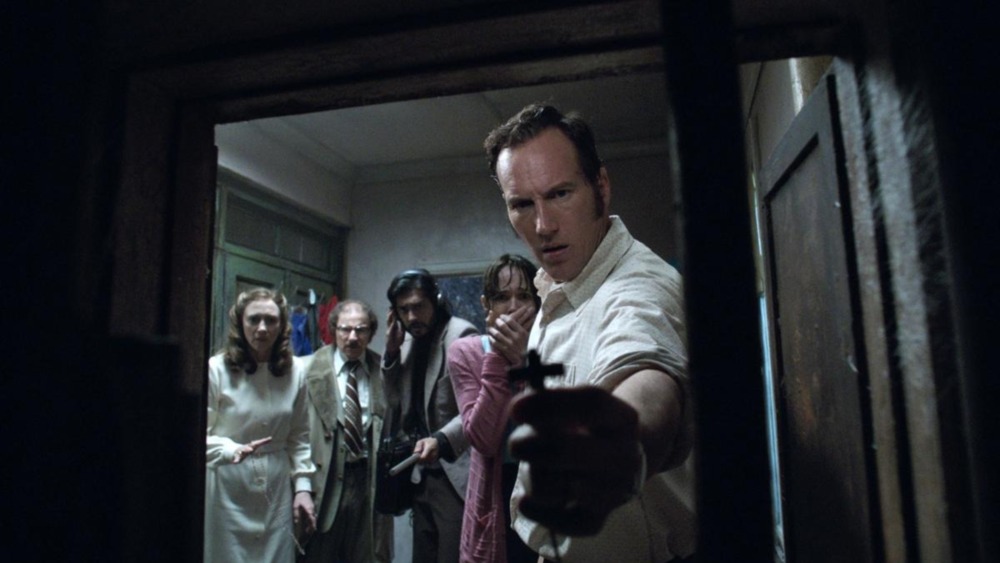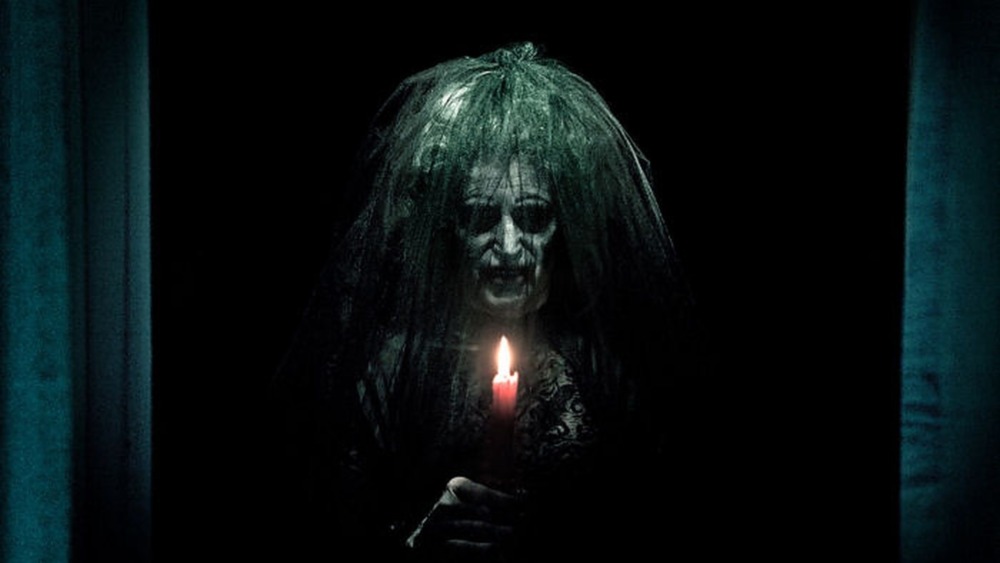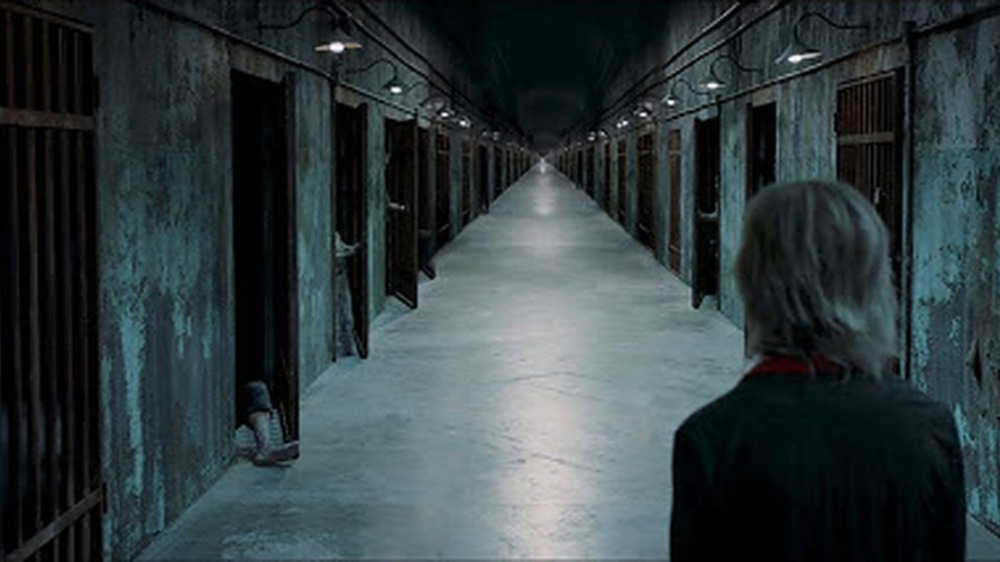The End Of Insidious Explained
In 2010, despite a relatively low budget, Insidious shocked audiences — with its horror as well as its critical and box office performance. It was so engaging that it launched one of the most expansive horror movie franchises in recent memory, not to mention a revival of the genre in general. And all this from what, on the surface, appears to be just a haunted house movie about a family, the Lamberts, trying to rescue their comatose young son from the clutches of a demon.
Part of what lends this film's universe its enduring quality — its deep and insidious grip on its audience — is the fact that its story transcends time, place, and even death. By blurring the lines between life and afterlife, it expands its cast of characters to include the living and the dead across the decades, and succeeds in building an intricate universe.
In many horror movies, the fear comes from the looming finality of death. But in Insidious, death is just the beginning, a door into a dark supernatural dimension that's even more terrifying. The shocking cliffhanger ending isn't just a gag, but a genuine taste of the horror to come — and soon-to-be-revealed horrors that have already come to pass. Here, we break down the ending of Insidious, the movie that brought the classic ghost story back to life.
The build-up
Insidious displays impressive and uncharacteristic restraint for a horror movie. Typically, films in this genre are peppered with periods of suspense followed by quick, cathartic scares. While Insidious has its share of scary moments, it refuses to set itself loose, making the conclusion all the more hard-hitting after we've been simmering slowly in its dark and atmospheric creepiness.
The restraint of this film is achieved in part with the help of what some critics call its comic relief: "geeky" paranormal experts Tucker and Specs (Angus Sampson and Leigh Whannell). The antics of these two temper the slowly escalating terror so it doesn't feel too drawn out, and the measured pace of tension and relief plants us firmly but precariously on the edges of our seat.
Director James Wan doesn't just use comedy to dissipate tension: Repeatedly, he suggests that something sinister is about to happen, then denies us the shock we expect. There's a knock on the door, but nothing comes of it.
At another point, there's a noise on the baby monitor, but the baby is fine — oh, except for the shadowy figure standing behind the crib, whose appearance is accompanied by the clang of a piano. But that quickly fades and we're safe again, it seems... But sometimes the scariest thing is having nothing to be afraid of for the moment. It means the next threat could come from anywhere.
Unconventional premise exposed at the end
On top of its expertly executed buildup, the conclusion of Insidious is much more mystical than a typical horror movie, ending with an astral projection quest into an alternate dimension. You can't say that about most horror movies: Usually we don't go into the spirit realm voluntarily; rather, the spirits invade our domain and we try to force them to leave us alone. Insidious goes in the reverse direction: Josh Lambert (Patrick Wilson), who has a history of letting the familial responsibility fall to his wife Renai (Rose Byrne), now needs to remove his son from the spirit realm rather than needing to remove a spirit from his son Dalton (Ty Simpkins).
In this film, the traditional haunted house premise gives way to a more ethereal drama about astral projection, family ties, and the soul of a child. Elise Rainier (Lin Shaye), the psychic that the Lamberts have called to help them, discovers with the aid of her paranormal investigators Specs and Tucker that the Lamberts' comatose son Dalton is not actually in a coma at all. He was born with the ability to astral project into other realms but is likely not aware of this ability, probably mistaking it for dreaming — until he traveled too far from his body, stranding himself in the supernatural purgatory known as the Further.
Josh revealed
The unique astral projection premise opens up the door to make cause-and-effect connections that go way back into characters' personal histories. Because of this, by the time Insidious concludes, we find out that there's more to Josh than meets the eye.
Many times in horror movies, a demon possesses a child. It's a common plot in which the parents are often left helplessly trying to expel the demon and save their family. Usually that's all there is to it, and the jump scares and suspense are built around the sudden terror that's descended upon a formerly peaceful family. But with Insidious, Josh isn't just a concerned parent trying to save his son: The root of what's happening actually lies with him and his own history.
There is still a vulnerable child at the heart of Insidious, but we learn that it is not actually Josh's son Dalton, but Josh himself: Elise has known him since he was eight years old, when she helped him hypnotically suppress his astral abilities in order to protect him from possession by the spirit of an evil old woman — the one the audience sees standing over a young boy's bed in the opening scene of Insiduous.
To save his son, Josh reawakens his astral abilities... But in doing so, he also reconnects with his childhood self, a version of himself more vulnerable to the spirit who had been after him his whole life and who finally sinks her claws into him in the end.
Dalton developed
Similarly, in the end we realize that Dalton is not being haunted because he was a helpless target, but because of his unique ability to astral travel, inherited from Josh. With hindsight, Josh glances through some of Dalton's drawings and realizes too late that they contain evidence not only of the red-faced demon that has been terrorizing the house, but of Dalton's astral projection abilities.
This revelation is another break from the horror genre in that it's not something many viewers would have guessed right away. This brand of dramatic irony is standard fare: The kid who draws a creepy figure and the parent who doesn't pay attention or brushes it off as an active imagination. Horror movies often use children to reveal the supernatural to the audience before it's revealed to the adults in the film, which builds suspense while we wait for the other shoe to drop.
But the suggestion of astral travel in Dalton's drawings isn't meant as foreshadowing. It's not a common enough premise in horror films for audiences to guess before the characters themselves do. Just the opposite: These drawings only make sense in hindsight, and strengthen the final reveal that Dalton is not being possessed, as we might first assume based on precedents set by the horror genre at large, but rather being used as an astral portal. His abilities also set up a role reversal in 2013's Insidious Chapter 2, in which he travels into the Further to help his father.
Chronological context
The best way to understand the ending of Insidious is by situating this film in the context of the four-film franchise, which wasn't released in the same order that the events of the story took place. Insidious is only the beginning — or, more accurately, it's closer to the end: Chronologically, it's actually the third film you should watch. (Insidious: Chapter 3 and Insidious: The Last Key are the first and second, covering Elise's backstory all the way from childhood and leading into the events of Insidious.)
Not only does the 2010 film take its own time developing the rules of its horror world, but some cause and effect tie-ins aren't revealed until one or two movies later. The suspense and slow exposition arcs throughout the entire franchise. For example, we don't learn until later about the inner workings of the Further, and the way that deceased people's spirits (and the spirits of living people with astral projection capabilities) can still play a major role in human events in the past as well as the present.
Insidious, viewed in the light of the film series as a whole, is the culmination of Elise's long tango with this supernatural world. Though it ends with her death, we're only at the beginning as far as what we'll find out about her, and the Further realm, throughout the series. The root of this plot lies not just in Josh's past, but in hers.
Elise's backstory is the key to Insidious
In a way, though this is the second time she has come to Josh's aid, Elise is somewhat responsible for his plight. Over the course of her life as told throughout the entire Insidious franchise, the psychic has displayed a pattern of accidentally taking her abilities too far and unleashing forces that should not be unleashed. The first, in Insidious: The Last Key, was a demon that killed her mother and went on to wreak havoc on her life and others'. The second force was Josh himself.
By restoring his repressed memories and ability to astral travel, she opens him up to possession by the very demon she had protected him from in his youth. Having been a skeptic for so long without the memories of his experience, he's completely unprepared to withstand the demon who comes to possess his soul. Elise only realizes this when she takes a picture of Josh and the old woman shows up instead.
By then, of course, it's too late. The combined backstories of Josh and Elise expose a demonic presence that has been creating serial killers for decades, a presence that Elise accidentally freed when she was young due to her abilities. Then, in Insidious, by freeing Josh and his abilities, she makes the same mistake again — this time at the cost of her life.
Nonlinear franchise sets up nonlinear spirit world
The nonlinearity of the Insidious franchise also makes a lot more sense when you find out in Insidious: Chapter 2 that time also moves nonlinearly in the astral realm of the Further, which is the locus of the demonic activity in these films. Not only do the actions of the past affect the present and future, but the reverse is also true in this unique universe: The actions of the present can impact the past, especially since time moves non-chronologically in the spirit world.
This is especially true in 2018's The Last Key, when an adult Elise actually speaks to her younger self in the past, but the ability of the story to evolve that way originated with Insidious. The story is somewhat out of order because it actually happens to its participants somewhat out of order: Sure, Josh's first encounter with the spirit of the evil old woman occurred when he was eight years old. But because he suppressed the memory, it only becomes a part of his personal, internal narrative many years later.
Giving us a first installment that actually takes place in the middle of the story frees up the franchise to develop its characters and its narrative in inventive, shocking ways, pulling from the past and the future to do so.
Insidious is critical in its first position
The meticulous filling-in of the Insidious timeline is set up impeccably by its debut film, which illuminates the questions the franchise would later answer: How much influence does the supernatural world have over ours? How much influence do we ourselves have? And who is that creepy old woman?
The film's conclusion sets up the blurred lines between the astral world and the real world. This ambiguous boundary is pronounced around people with astral projection and psychic abilities like Josh, his son, and Elise. The concept of hauntings revolving around individuals' psychic abilities is also one that the franchise builds on extensively, but is first introduced by Insidious' creepy ending.
At the end of Insidious we learn that not only do astral abilities provide humans access to the spirit world, but vice versa. The only time a spirit arrives to wreak havoc on the real world is through an encounter with someone who has abilities, like Josh, Dalton, or Elise. This revelation shows us the basis of Elise's backstory — and Josh and his family's future.
It changed the game in the horror genre
Insidious was game-changing as a result of its depth in the personal histories of the characters and their demons — as well as the fact that it catered to a wider audience than traditional horror. A 70-year-old female protagonist is uncommon in any film, let alone one in the horror genre, which has historically appealed to teens and young adults. Nevertheless, we become so invested in this unlikely hero that her death at the end is devastating.
Insidious offers a de facto response to the common horror movie critique "If a house is so clearly haunted, why doesn't the family leave?" because the family does move in the middle of the movie — and remains haunted anyway. This not only revamped the haunted house trope, subverting the idea altogether and suggesting that haunted houses arise from haunted people, but also granted more weight to the continuity of Wan's eerie atmosphere.
Usually we attach atmospheres to places, and this has been an effective device of the haunted house genre for decades. But when the family moves and the ambience persists, we understand that the threat runs much deeper. Josh has not only moved between houses but realms at the end, and still his demonic burdens linger.
It therefore paved the way for a high-caliber horror revival
Insidious' low-budget success was inspiring for indie horror — it's hard not to notice the uptick in quality indie horror released in the years following its 2010 premiere. The public had proven its taste for somewhat eccentric premises, slow-burn exposition, and the subversion of horror tropes while honoring the classic hallmarks of the genre. Insidious also set the stage for including heavier themes, like grief in guilt, in scary movies.
The impressive roster of 2010s horror includes 2014's The Babadook and 2013's The Conjuring, which operate on very similar premises: Haunted people haunt everything else, from their homes to the people around them, and the fight for a soul can be a complex one that requires multiple people coming together.
The Conjuring in particular, released through the same director and also starring Patrick Wilson, is famous for its vast and intricate shared universe, which partly owes itself to Insidious' thematic precedent. The broader scope involved in creating a horror universe, which operates on a large scale while preserving the intimate terror of a classic horror story, may be partly responsible for the wider appeal of these films: With a larger wealth of characters and situations to draw from, more and more audience members will find something to identify with.
A lesson in inherited trauma
The main lesson of Insidious is clear: The problem is always deeper — more insidious — than you think. (This is evidenced even more by the fact that the small-budget film evolved into an intricate four-installment franchise extending over two different time periods.) The story, like so many others when you really get down to it, spans generations and is deeply tied to the personal psychology and choices of individuals and how these effects ripple into the lives (and afterlives) of others.
In many ways, it's a story about inherited trauma, a concept that is receiving more and more critical analysis in the modern age. Josh has suppressed his memories of his astral projection abilities and his encounters with demonic forces, just as survivors of trauma often suppress traumatic memories. But like trauma, as scientific studies are beginning to find, astral projection in the world of Insidious can also be passed on biologically through generations.
The inextricable connections between the past and the present throughout the entire Insidious saga (especially those within families as storylines of abuse emerge in the later movies) suggest this lesson: Each generation can be a product of the choices and experiences of the one that came before it, and each generation has the power to break the cycle.
Foundation for the future
The story has become so deep that Patrick Wilson, who has played Josh throughout the franchise, leveraged his extensive experience into directing the fifth installment of the franchise — which, in true Insidious fashion, goes deeper into "the consequences of the Lamberts' choices" in the future and further unpacks what they've been through so far.
And, again in keeping with the legacy of the franchise, the fifth film makes a decade-long jump from the events of Insidious: Chapter 2, expanding its universe once again across time and space. This time, though, it heads into the future — and once more into the Further.
What might happen when we arrive there? If you look at Insidious, we get a few hints. We know that the dead are never really gone, not with the Further as near as Insidious reveals it to be. We know from Chapter 2 that Dalton and Josh have chosen to have their memories suppressed again — and we know most importantly, from the enigmatic ending of Insidious, that this didn't pan out so well the first time. We're in for quite a ride.
